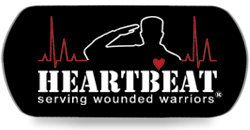The Effectiveness of Heartbeat’s Hippotherapy and Equine Therapeutic Riding Validated Statistically
by Janet Raulerson
Definition and background of statistical analysis:
Statistical Analysis is defined as the science of collecting and presenting large amounts of data to discover underlying patters. Heartbeat utilized statistical analysis to compare the effectiveness of our Equine Therapeutic Riding Program and our Hippotherapy Program. We utilized 6 aspects to evaluate: pain level, mood, flexibility, anxiety, physical tension and ability to focus. Heartbeat wanted to see if there was a significant difference between the before rating and the after rating of the therapies; and if there was a difference, was that difference only due to chance or results of the therapy. The use of the p value in statistical analysis helps decide this. The p value represents the probability that the results of the therapy are caused by chance alone. The smaller the p value, the less likelihood that the results are due to chance.
Most analysis use a p value of 0.05 to determine that the results are not by chance but are due to the therapy. In our analysis, the p value was calculated to be 0.0001. This means that the difference between the before and after results was attributed to chance only 1 time out of 10,000. This level of difference is very significant. Bottom line, the therapies are making a substantial difference in the Wounded Warriors’ lives.
Defining Hippotherapy and Equine Therapeutic Riding:
In 2010, Heartbeat Serving Wounded Warriors initiated a clinical, cutting edge Hippotherapy program, appropriately named Back in the Saddle Warriors. The American Hippotherapy Association (AHA), founded in 1992, defines Hippotherapy as “the movement of the horse as a strategy by physical therapists (PT), occupational therapists (OT), and speech-language pathologist (SLP) to address impairments, functional limitations, and disabilities in patients with neuromusculoskeletal dysfunction.
Essentially, warriors perform different physical therapy maneuvers while on the horse. This requires them to perform a number of maneuvers and respond to the horse’s movements at the same time. The net effect is improved muscle tone, balance, posture, coordination, strength and flexibility. Balance is particularly important for warriors with Traumatic Brain Injury (TBI). Horses and humans have something in common, a pelvis that works and moves the same way. Both have identical hip movements when walking. Sitting on a moving horse allows the warrior’s body to move naturally. It strengthens muscle groups. Staying upright on a horse requires balance, coordination and muscle strength. Injuries from war may have affected those abilities and these can be helped by this therapy.
Although the horse is utilized as a physical therapy tool, the animal can offer much more. The warriors respond emotionally as well as physically to the horse. These animals are gentle and sensitive, and have a unique ability to sense human emotions. Horses are also able to mirror the warrior’s emotions so that he has a better understanding of where he is emotionally. This special bond helps warriors work through difficult issues. This can build confidence and change their outlook on life. In short, it can help bring healing.
In 2018, Heartbeat added a second therapy program to Back in the Saddle Warriors: Equine Therapeutic Riding. This therapy teaches the warrior to ride while working on posture, balance and confidence. As stated earlier, balance is very important for those warriors with TBI. Riding on the horse also has a positive impact, and affects the body brain connection in a positive way.
Design and set up of the therapy programs:
Data was collected in the form of pre therapy and post therapy evaluations for 6 different aspects: pain, anxiety, flexibility, physical tension, mood and ability to focus. Each warrior would rate each aspect on a scale of 1 to 10 with 1 being no pain, no anxiety, very flexible, relaxed, good mood and good ability to focus. A rating of 10 represented maximum pain, high anxiety, tight, tense, negative mood, and poor ability to focus. Data was collected for Hippotherapy from December 18th, 2012 to November 2nd, 2014 (173 therapy sessions); January 13th, 2015 to December 13, 2016 (86 therapy sessions); and January 7, 2019 to July 17, 2019 (51 therapy sessions). Equine Therapeutic Riding utilized that same 6 aspects and same evaluation forms for the months of January 2, 2018 to July 17, 2019 (125 therapy sessions).
The Hippotherapy data and the Equine Therapeutic Riding data were analyzed separately. After comparing all of the before and after data in a paired t-test, the results showed an extremely significant difference with a p value of .0001. Therefore, the warriors showed extremely significant improvement in terms of pain level, anxiety, flexibility, physical tension, mood and ability to focus for both Hippotherapy and Equine Therapeutic Riding. Heartbeat also noted that several of the warriors were able to come off many of their medications and one warrior that needed a cane for walking was able walk independently after weeks of Equine Therapeutic Riding.
Heartbeat is continuing to keep evaluations on all of the warriors involved in each of the two programs for further analysis. We are extremely excited that both of these therapies can now be validated both qualitatively as well as quantitatively.



